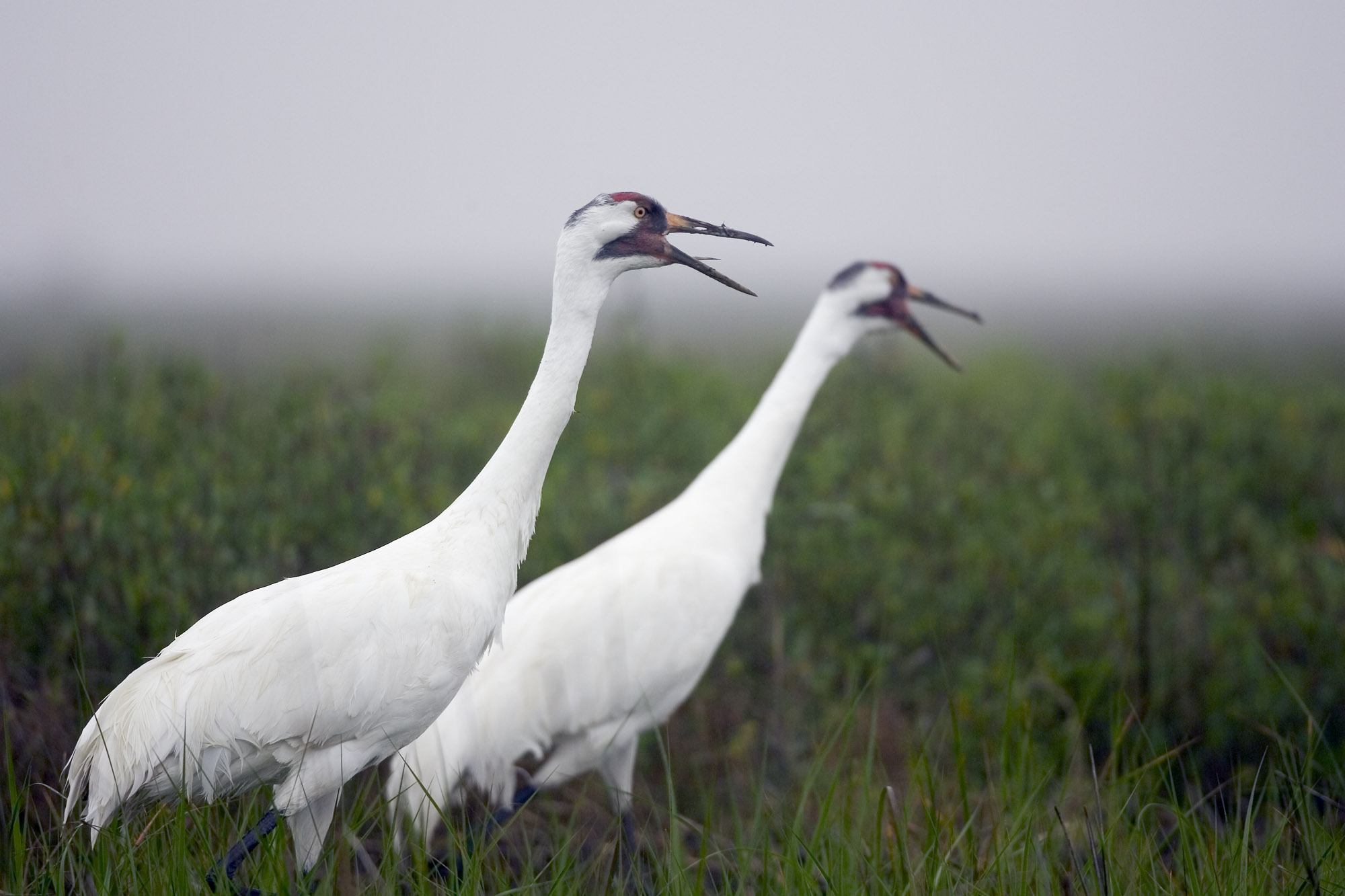Wildlife: New Citizen Science Program
Thursday, December 20th, 2012
Whooping Cranes, photo by Earl Nottingham
Passport to Texas with support from the Wildlife and Sport Fish Restoration Program
Texas has long been home to the last wild migratory flock of whooping cranes in the world.
05— And so we know that in Texas. And we enjoy seeing them and waiting for their arrival in the fall.
Lee Ann Linam is a biologist in the Wildlife Diversity program, and oversees the Nature Tracker program –which now includes Whooper Watch.
20–One of the interesting things that’s developing…as the whooping crane population expands… we’re seeing whooping cranes use new areas. Both in migration and in their wintering areas. And so, last year, when several whooping crane families spent the winter in the Austin area, we decided we wanted to be ready to watch for whoopers that might be using habitats like that and learn more about them.
Traditional Texas wintering grounds for the endangered species is the central-coast, around the Rockport area and in the vicinity of Aransas National Wildlife refuge. So, finding them so far inland last year was unusual.
20– Our whooping crane population in Texas is getting larger. We’re approaching about 300 birds in that population now. And as they try to squeeze themselves into their traditional wintering territories, perhaps they’re encountering some crowding there. In addition, last winter was a very mild winter, so inland water bodies that might have normally frozen early in the winter did not.
Linam also notes that habitat conditions on the coast last year may have suffered due to the drought. We’ll have information on Whooper Watch tomorrow.
The Wildlife and Sport Fish Restoration program supports our series and funds diverse conservation programs throughout Texas.
For Texas parks and Wildlife…I’m Cecilia Nasti.


 Passport to Texas is a
Passport to Texas is a  Passport to Texas is made available by:
Passport to Texas is made available by: